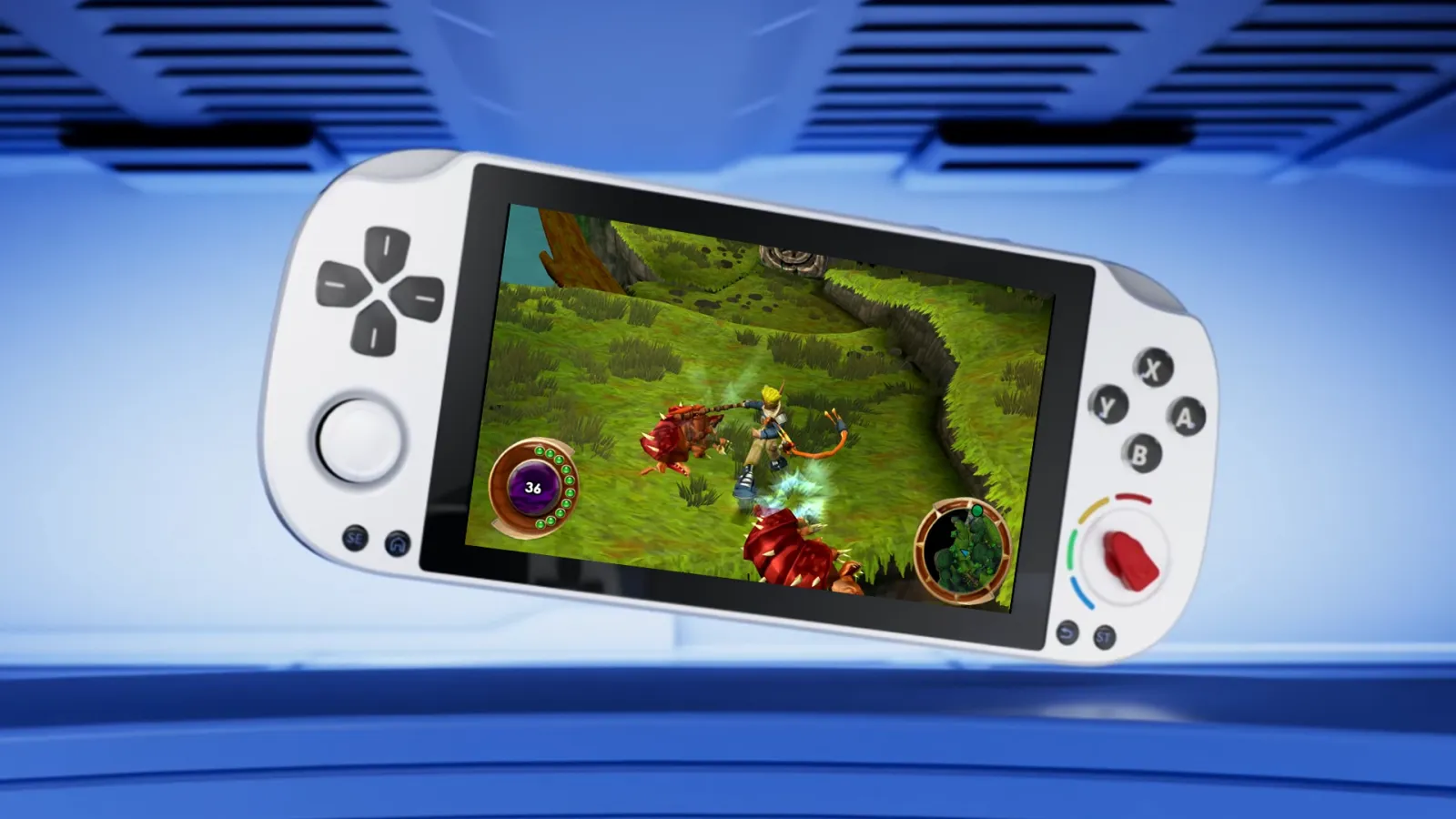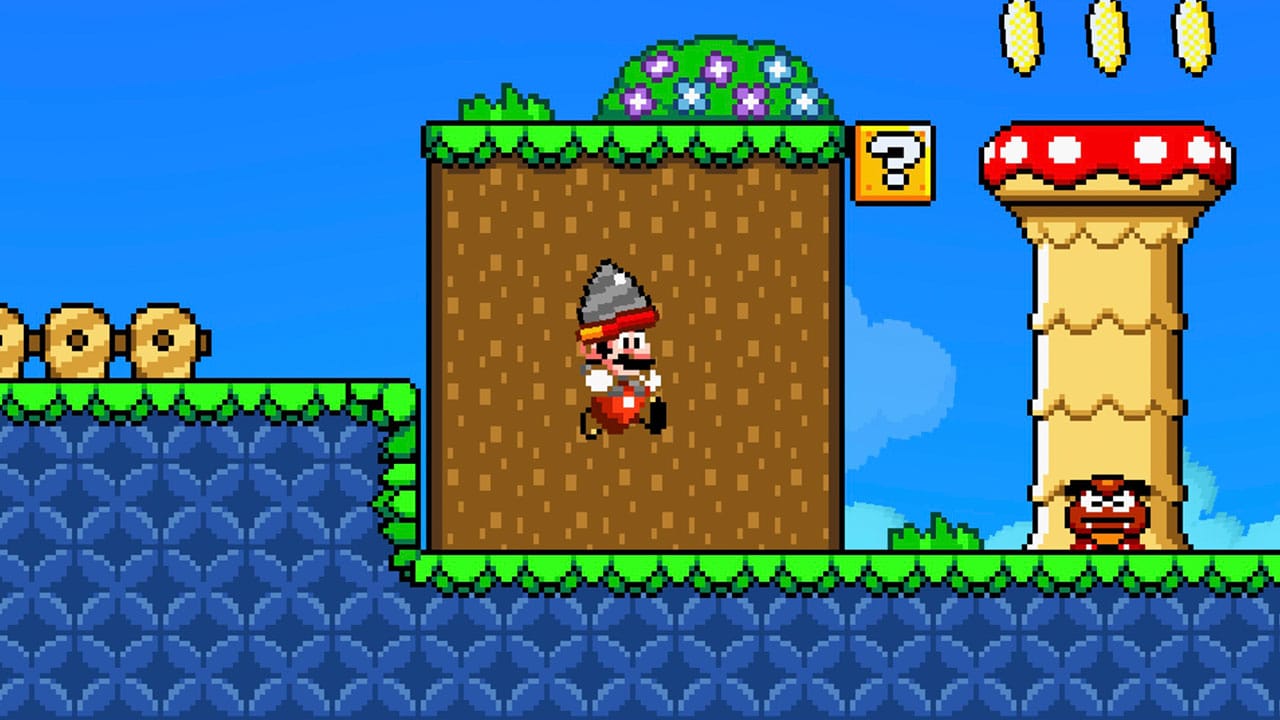Block out the next month of your life and prepare to blast a hole in the past – it’s time for our Duke Nukem Collection 1 & 2 review!
The arrival of six Duke Nukem games on Evercade, split across a pair of cartridges, feels like an event.
The Blaze-produced ecosystem, which today encompasses the original handheld Evercade of 2020, the home console VS of 2021, and the higher-spec, TATE-supporting EXP portable of 2022, has steadily grown into the place to (re)play retro favourites and oddities (and an increasing number of modern games, too) using officially licensed cartridges.
But many of its releases have arrived with relatively little fanfare outside of already invested audiences.
It’s amazing to have easy access to awesome and otherwise incredibly expensive Sunsoft, Renovation and Toaplan games on developer-dedicated compilations, likewise sets from studios such as The Bitmap Brothers, Team17, Codemasters and Atari.
But Duke’s Evercade debut feels like a moment.
He’s no Lara Croft or Crash Bandicoot, but there’s no denying that the alien butt-kicker of big boots and bigger ego is a gaming icon.
Evercade has even dedicated a special VS console to these releases, the Atomic Edition, which includes both carts in the box. It’s a celebratory time for certain, and Duke’s all outta’ gum (or something like that).
Diving Into The Duke Nukem Evercade Collection
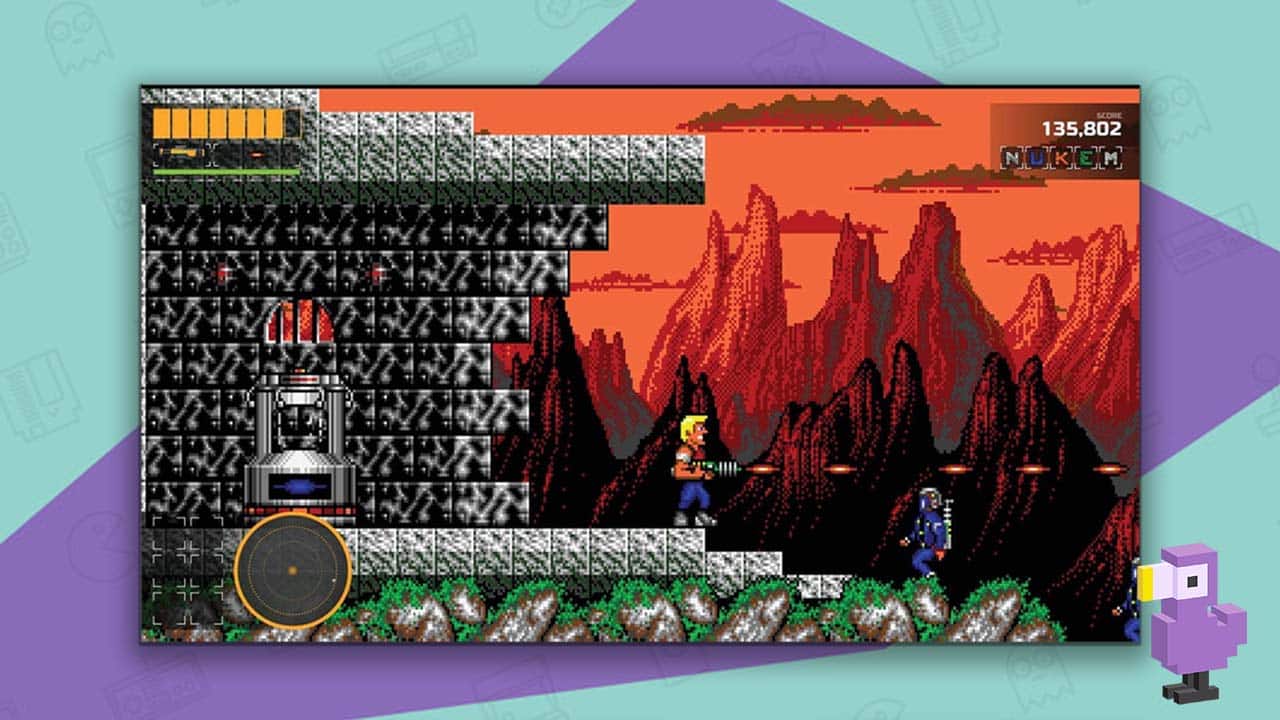
Before diving into any of the games mentioned in this Duke Nukem Collection 1 & 2 Review, be sure to update whatever Evercade device you’re playing them on. We found that the VS would crash before the title screen on Collection 1 if the console wasn’t running the latest firmware.
Both carts have small print telling users to do this – but if you miss it and the games aren’t working for you, that’s likely to be your problem.
Pre-updating, we also had a situation where the VS wouldn’t even acknowledge Collection 1 was in a slot, while reading Collection 2 just fine, so again: get your Evercade up to speed. (As a side note, there doesn’t immediately appear to be any bonus content unlocked by having both Duke carts in your VS, but who knows what may be added at a later date.)
Collection 1
Collection 1 packs in fresh remasters of Duke Nukem (initially released in 1991) and its sequel, Duke Nukem II (no fancy suffixes on this 1993 release), alongside Duke Nukem 3D: Total Meltdown, which is the (previously) PlayStation-exclusive version of Duke Nukem 3D which came to Sony’s console in 1997.
Total Meltdown delivers the three episodes of the original 1996 3D release for PC – ‘L.A. Meltdown’, ‘Lunar Apocalypse’ and ‘Shrapnel City’ – as well as the added ‘Plug and Pray’, which contains several homages to movies and draws environmental inspiration from PlayStation hits of the time such as Tomb Raider and Wipeout.
Collection 2
Collection 2 includes the underrated Game Boy Advance title Duke Nukem Advance – more on that gem of 2002 later – and two third-person adventures originally released for PlayStation, Time to Kill and Land of the Babes.
These PS1 games play similarly to Tomb Raider, with Duke shimmying and sprinting with the same rigid awkwardness that could make Lara’s movements excruciatingly fussy. The two titles are very alike – the 2000-released Babes appears to use many of the same graphics as Time to Kill, which came out two years earlier – and lack the urgency and intensity of Duke’s first-person shooters.
If you like one, you’ll probably enjoy the other. And if you don’t, your reaction is likely to be the same for the second game.
Hail To The King
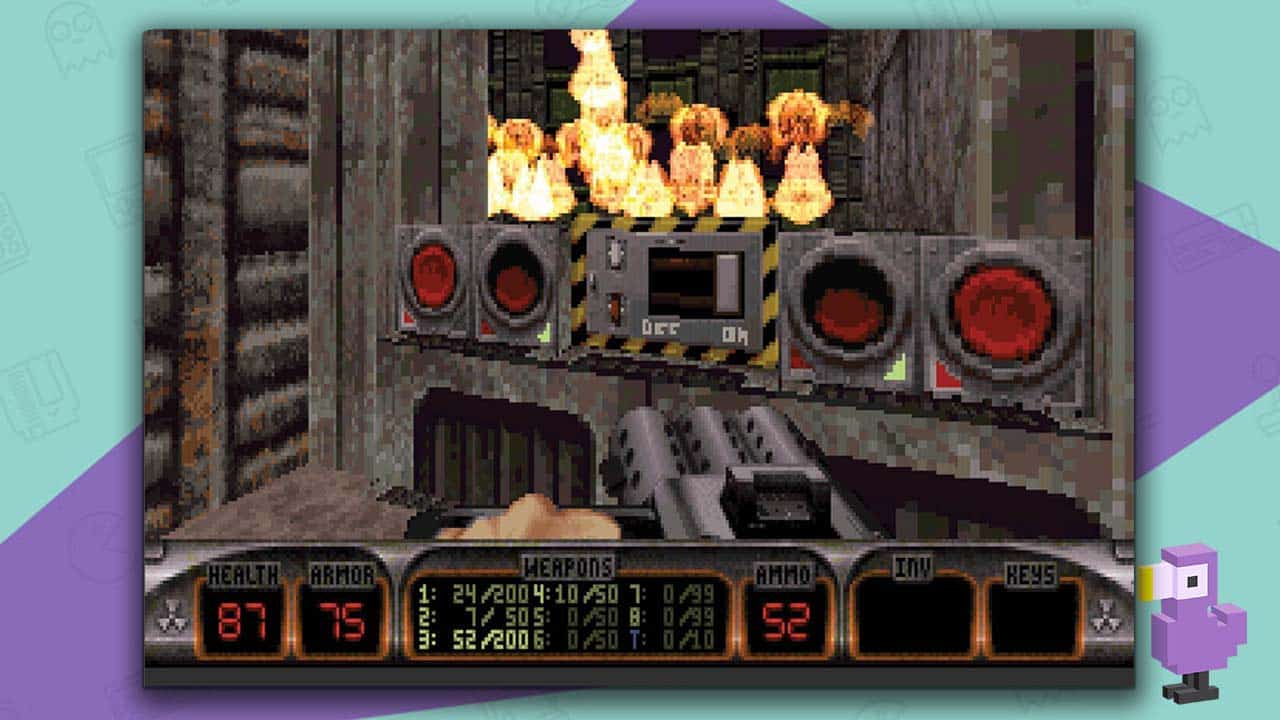
The two 2D side-scrollers on Collection 1 – the original Duke Nukem and Duke Nukem II – came out for MS-DOS in an era where the PC platform wasn’t confidently competing with other home computers and consoles.
It was all a little lack-lustre when it came to action-orientated platformers, which these very much are.
Jerky of movement and with often garish VGA visuals best summarised as an acquired taste, the first two Duke games obviously matter legacy wise given what came after them. Still, neither is much fun to play in the here and now.
At least, that was the case before Evercade’s excellent remastering job, which has turned the pair into accessible and rewarding affairs which have unexpectedly proven to be the highlight of these compilations.
Once Evercade had acquired the Duke Nukem license from current rights-holders Gearbox (whose name is all over these releases), the company approached Nikolai ‘lethal_guitar’ Wutte-Hohendorf, who’d already produced a full recreation of Duke II’s source code, to use his RigelEngine to make these remasters come to life.
Smoother Gameplay Makes A World Of Difference
“I just can’t go back to the choppy frame rate anymore,” Nikolai remarks in the notes accompanying Collection 1 – and he’s absolutely right. While this release lets you play both Duke and II in their original MS-DOS guises via the simple pressing of the select button, they’re infinitely more enjoyable in their new widescreen-enabled, UI-rearranged, quicksave-supporting versions.
The expanded gameplay window and smoother movement make navigating maze-like levels far more satisfying and lessens the unwanted surprise of leaping over to an off-screen platform only to find spikes or some other trap waiting for you.
Duke Nukem and its sequel feature sprawling stages that encourage exploration to uncover all their secrets, but they can also be raced through in a path-of-least-resistance approach if that’s more your speed.
Neither is exactly what you’d call a metroidvania as there’s no backtracking between areas, but Duke needs to collect certain items at certain times in order to progress.
We’re talking an electronic glove to operate machinery and special boots to allow him to jump higher.
The stories are nonsense, of course – unremarkable baddie is set on conquering the world and the player, as Duke, has to stop them. But there’s plenty of enemy variety across the two games and collectibles to improve your end-of-level score.
There’s a Turrican II feel to the sequel’s remaster which some will enjoy, and its more-detailed visuals and overall darker mood perhaps should make it the better of the two games.
Still, there’s something so wonderfully pure about the original Duke that, in this player’s opinion, makes it the more satisfying of the pair to sit down with.
One For The Players
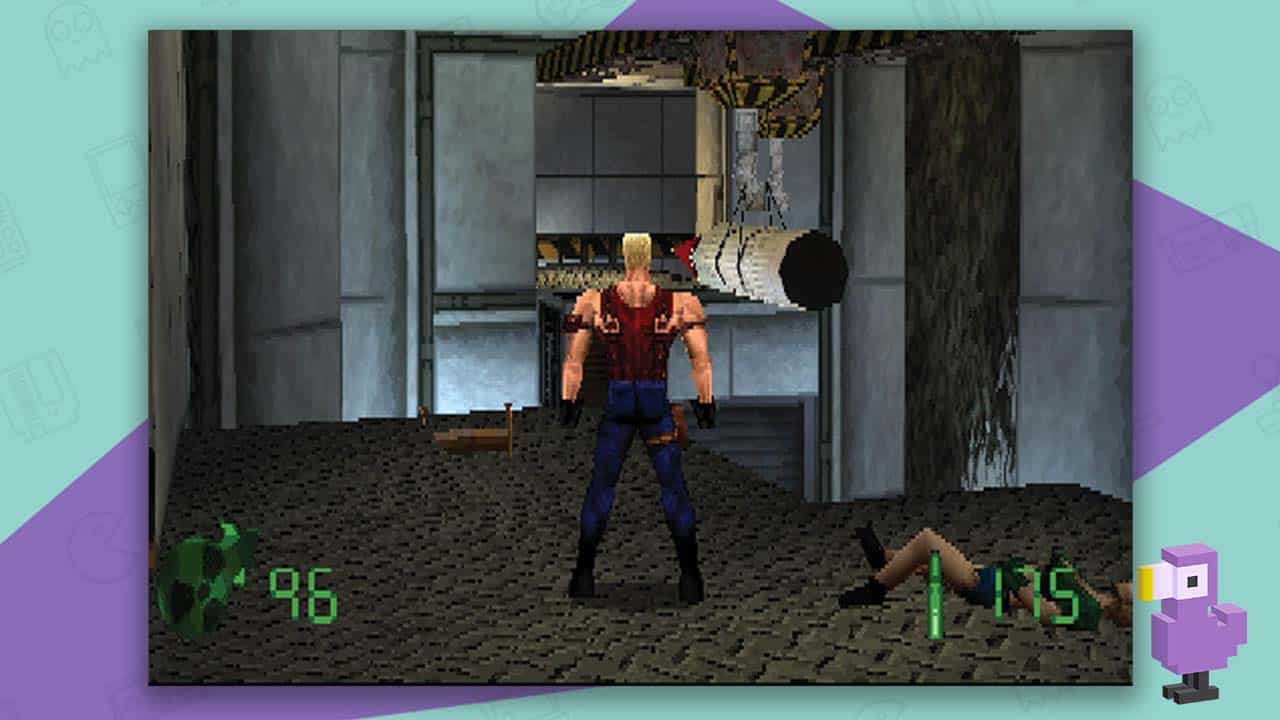
Duke Nukem 3D: Total Meltdown, Time to Kill and Land of the Babes are PS1 games, and so ideally require the same controls that were on that console’s standard pad. Unfortunately, that spells bad news for owners of the first-model Evercade, as that handheld only has one pair of shoulder buttons rather than the two needed to properly enjoy these titles.
There are workarounds, and the manual for Collection 1 clearly outlines how to play Total Meltdown when short a couple of inputs, via substantial use of the select button. But it’s worth noting that these are best enjoyed on the VS or EXP, where the button layout is more in keeping with the PlayStation pad’s configuration.
If you must use an original Evercade, the other games here look and play great, especially Advance – perhaps no surprise given its handheld roots.
Calling In The Super Pocket For Backup
Both Duke sets are compatible with the recently released Super Pocket consoles, and we’ve tested them on that diminutive device too (we mostly used the Taito model, but the performance is the same on the Capcom alternative).
While this handheld does have two pairs of shoulder buttons, the positioning of them can be a problem. Much will depend on your own hands – how big they are, how you tend to hold your console, where you do and don’t apply pressure to actually keep hold of the thing as you play, etc.
But in testing, we couldn’t comfortably use the inputs for strafing or cycling through our inventory on Total Meltdown, without the Super Pocket slipping somewhat. And it was just as tricky with Advance, where these movements are so essential for dodging enemy fire and (again) cycling through your available arsenal.
Duke and Duke II are pretty as a picture on the Super Pocket, however. While they’re PC games, really, their simple formula transfers wonderfully to on-the-go sessions and the system’s IPS screen really has the remastered visuals popping with crisp colours and pin-sharp contrast.
The EXP should be the handheld go-to for any of these games, but if you’re coming to the Evercade library having just picked up a Super Pocket, you can rest assured that Duke’s escapades look and feel great on them – those aforementioned rear-button fiddles aside.
Big Action, Small Screen
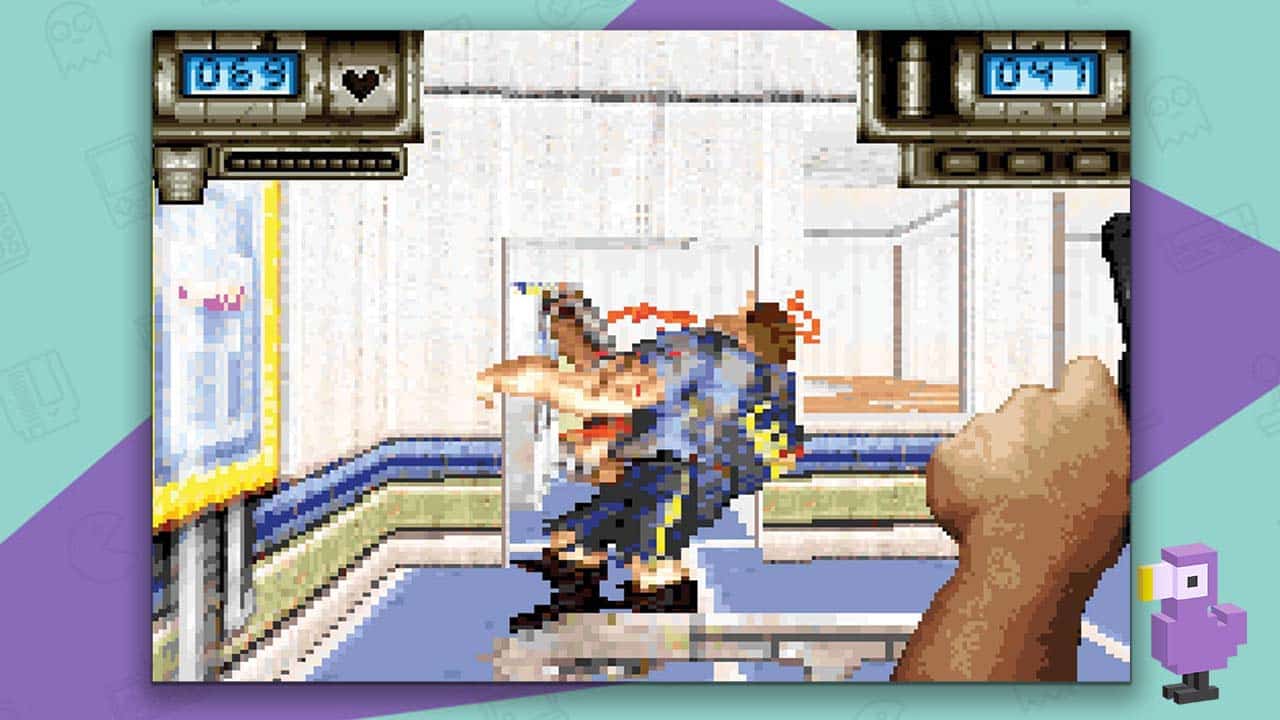
Collection 2’s highlight is the GBA’s Duke Nukem Advance (your mileage may vary, especially if you have any favourable familiarity with this cart’s PS1 games – but you’re not the one writing these words, so…).
Hailing from 2002, when Nintendo’s handheld wasn’t exactly blessed with quality first-person shooters, this is a globe-spanning adventure in which Duke gets to blast away creepy aliens all the way from Area 51 to Earth’s orbit.
It’s definitely streamlined, a simplified take on the gameplay of Duke Nukem 3D (from which it borrows numerous assets), and probably won’t take you more than four or five hours to finish (subject to your chosen difficulty, of which there’s four settings).
But it really works as a portable experience, with many bitesize levels building into something bigger. It’s a moreish thing, which feels wonderfully at home on the EXP but blows up perfectly prettily on the VS – assuming you can accept that so many enemies just look like a bunch of colourful squares at that scale.
Has Duke Aged Well?
Advance’s story sees Duke ultimately rescue a number of cloned ‘babes’ who are very keen to pay him back, and Duke responds with some suitably suggestive language. And this is, obviously, an element of these games which hasn’t aged well.
The tone of the 3D games is macho, sexist, with women objectified even when they’re essential to advancing the plot (as is particularly the case with Land of the Babes).
If you can find a way to take it all as being of its time, more tongue in cheek than knowingly misogynistic, you’ll be fine. But there’s no way games with this attitude would get a green light today, so bear that in mind as you murder so many pig cops and cycloid nasties on your way to the credits.
Final Thoughts
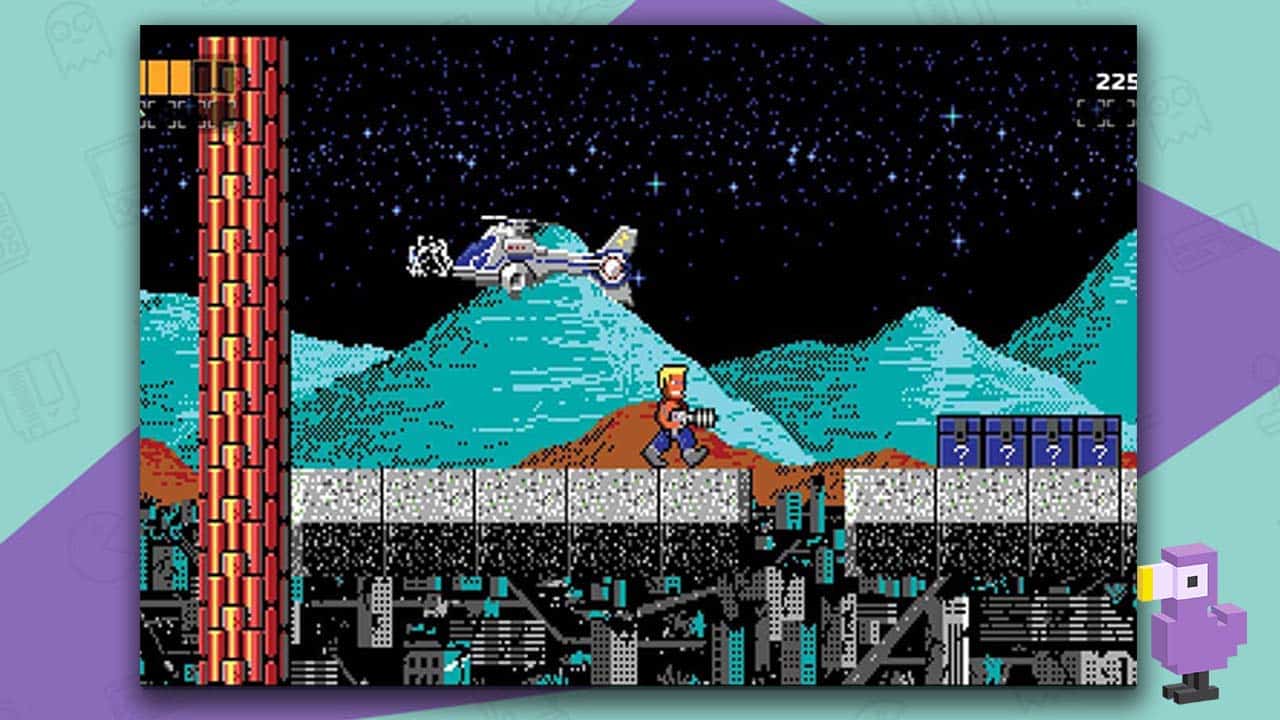
Evercade’s remastering of Duke Nukem and its sequel have transformed these MS-DOS relics into eminently playable modern platformers, retaining a retro style but moving with a fluidity that makes for highly enjoyable play across portable and home systems.
Collection 1’s manual talks about how these remasters are amongst the “most ambitious and challenging projects Blaze has worked on to date”, and that effort’s resulted in what are clearly the best ever versions of these games.
They’re now of a standard their legacy deserves.
Having Advance included here is a big win, and brings a largely forgotten chapter in Duke’s history back into focus.
It still plays brilliantly (so long as you can access the shoulder buttons you need to use) and looks incredible on the EXP, Super Pocket and OG Evercade screen. The PlayStation inclusions aren’t without their flaws, but in the case of the third-person games, these are mostly inherited from the platform they debuted on. Duke’s movement is stiff and the need to regularly jump can make for many a moment of frustration.
Total Meltdown is a scream to tear through, and its place in the pantheon of foundational FPS games is unquestioned.
This game mattered – and its inclusion in the Evercade library matters, too. From here, who knows what other famous franchises could mighty foot their way onto Blaze’s family of consoles?



